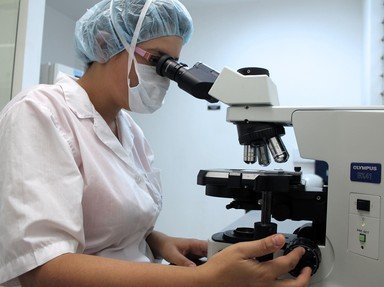Quiz Answer Key and Fun Facts
1. Membrane bound organelle that is home to the genetic material of the cell
2. Body where proteins are packed into balls of lipids called vesicles for transportation
3. Recycling centre of the cell in which large molecules are broken down and the components reused
4. Generator of ATP, the main source of chemical energy within the cell
5. A rigid outer boundary found in plant cells but not animal cells
6. Split into 'rough' and 'smooth' sections depending on the presence of ribosomes
7. Internal fluid of the cell in which all of the organelles are located
8. In plant and fungal cells, a bag containing a watery solution of enzymes and other molecules
9. Site of translation, in which nucleic acids code for amino acids that are constructed into proteins
10. Lipid bilayer that divides the intracellular and extracellular domains
Source: Author
pagea
This quiz was reviewed by FunTrivia editor
WesleyCrusher before going online.
Any errors found in FunTrivia content are routinely corrected through our feedback system.

